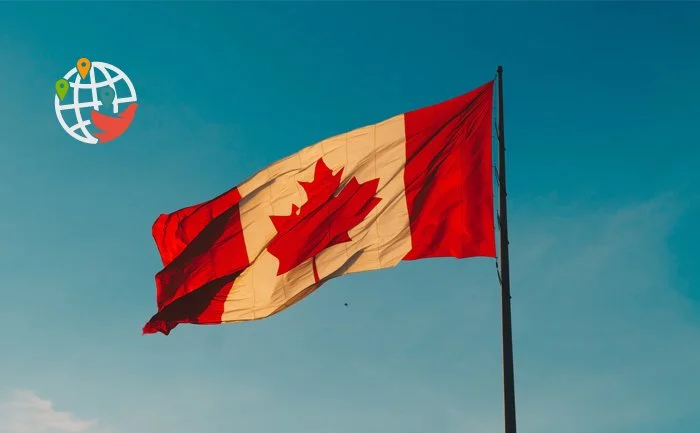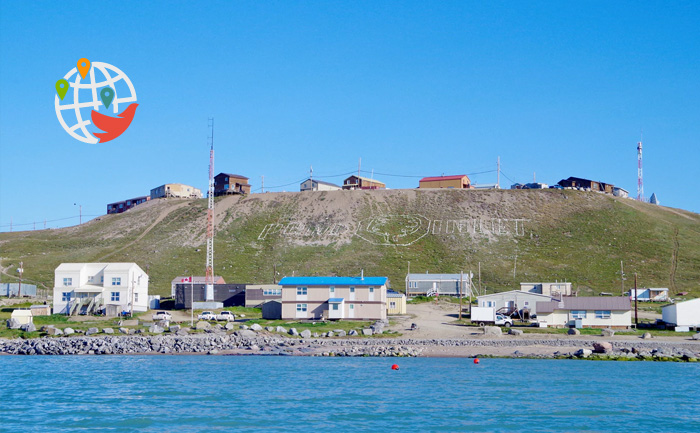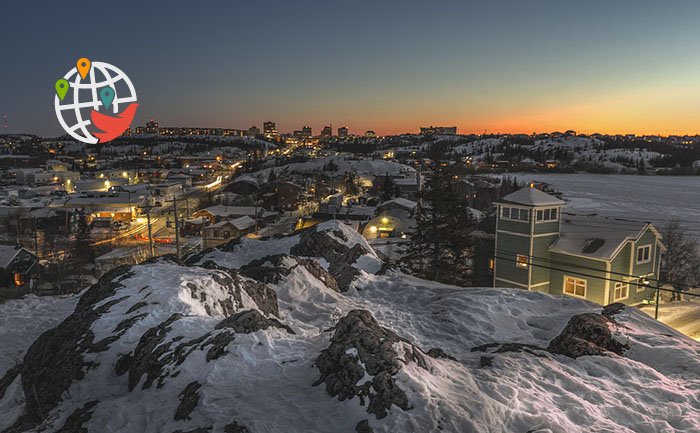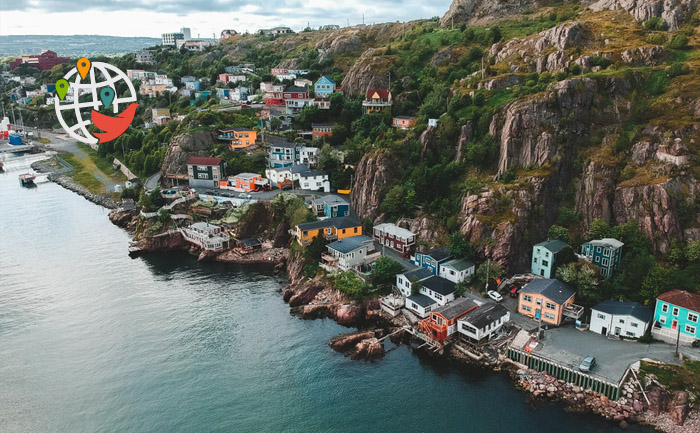Ranking of Canada's Provinces and Territories: Where to Immigrate

This ranking is based on factors important to immigrants, such as the job market, economy, cost of living, wages, climate, and availability of immigration programs.
13. Nunavut: Unemployment, high prices and cold
First place from the end is taken by Nunavut, an area in circumpolar Canada. It is the least populated region in the country: its area is comparable to Indonesia, but just over 30,000 people live there. Almost the entire territory of Nunavut is an arctic desert in a permafrost zone. Both winter and summer temperatures are cold. Most of the population is indigenous Inuit. Unlike the rest of Canada, Nunavut has almost no immigrants and no immigration program of its own.
Labour market. Unemployment in Nunavut is the highest among Canadian regions (14%). The area subsists on mining (diamonds, iron, gold, copper, oil, nickel, natural gas, lead, silver, uranium, zinc), fishing, tourism, and is financially highly dependent on federal government subsidies.
Cost of Living. Nunavut is the most expensive region in Canada. Residents of Nunavut spend about a third of their household budget on housing — rent or mortgage payments. Together with housing taxes and utilities the average cost per month is more than $2,500 CAD. Transportation costs $1,200 CAD. Transportation costs include cars, gasoline and public transportation. An average of another $1,345 CAD per month is spent on food. All in all, families in Nunavut spend on average almost $7,900 CAD per month or more than $94,000 CAD per year. In addition to housing, food and transportation, this amount also includes clothing, medication and entertainment. The high costs in Nunavut are explained by the remote location of the region and the fact that there are almost no roads or railways. Goods and fuel are transported from southern Canada by water and air, which are often more expensive than overland transport.
Wages. You have to admit that the cost of living in Nunavut is well justified by the wages. Locals earn more than other parts of Canada. For example, the average family's after-tax income is $120,000 CAD per year.
Cities. Nunavut has only one town, Iqaluit, with less than 8,000 people. The rest of the settlements are villages. Of the Russian regions, Nunavut's climate can be compared to that of Yakutia.
immigration programs. Unlike other regions of Canada, Nunavut does not have its own immigration program.

12. Northwest Territories: Expensive and difficult to access
Northwest Territories are located in the northwestern Arctic part of Canada, in the circumpolar zone. The provinces of Saskatchewan, Alberta and British Columbia to the south, the Nunavut Territory to the northeast and east, the Yukon to the west, and the Arctic Ocean to the north. The Northwest Territories are a sparsely populated and inaccessible region with a harsh climate.
Labor Market. Unemployment averages 8.4%. Local economy is based on the extraction of minerals: gold, diamonds, natural gas.
Cost of Living. The Northwest Territories are one of Canada's most expensive regions in terms of cost of living. Residents of the Northwest Territories spend about $2,500 CAD per month on housing. A home in this part of Canada can cost on average $470,000 CAD. Transportation costs on average $1,580 CAD per month — more than any other region in Canada. Families spend an average of $970 CAD on food. The total cost per family per year is $93,000 CAD.
Wages. Earnings in the Northwest Territories are not insignificant either, though less than in Nunavut. A family earns on average $96,500 CAD per year.
Cities. The Northwest Territories are twice the size of Ukraine, but only 40,000 people live there, with half of them in the regional capital, Yellowknife. The city is both a major industrial center for the region and a scenic spot with rich recreational and tourism opportunities. However, there can be problems with transportation accessibility. Until 2012, Yellowknife was virtually cut off from the rest of Canada every spring and fall when, due to weather conditions, all goods had to be shipped by air.
immigration programs. In the Northwest Territories there is a provincial program, which includes streams for foreigners who have received a job offer or invitation in the Express Entry system, as well as for entrepreneurs.

11. Newfoundland and Labrador: unemployment and boredom
This province occupies the island of Newfoundland and the northeastern sector of the Labrador Peninsula, bordering the province of Quebec to the south and west. Economically and culturally, Newfoundland and Labrador lags behind most other Canadian provinces. It has only one university (in the capital city of St. John's) and is strongly influenced by the church.
Labour market. Unemployment in Newfoundland and Labrador is high at 13.7%. It is one of Canada's least industrialized provinces, but it is rich in minerals: asbestos, iron ore, copper, oil, natural gas, lead and zinc are mined here.
Cost of Living. The average family in this province spends $1,200 CAD on rent, $1,140 CAD on transportation and $650 CAD on food. A single family home can be bought for an average of $240,000 CAD. The total cost per family per year is $58,000 CAD.
Cities. The capital and largest city of the province is St. John's. Corner Brook, Grand Falls-Winsor, and Gander are the next largest.
immigration programs. Newfoundland and Labrador has a provincial programme which allows different categories of foreigners to immigrate. The province also has a Atlantic Immigration Programme through which high and mid-skilled professionals and recent graduates may apply for Canadian residency. It is quite easy to immigrate to Newfoundland and Labrador as well as the Atlantic provinces in general. Many people use the region's immigration programs to move to other provinces in Canada.

10. Yukon: lowest unemployment and natural expanses
Yukon is an area in northwestern Canada. The region is washed by the waters of the Arctic Ocean to the north, bordered by the Northwest Territories to the east, British Columbia to the south, and Alaska to the west. Winters in the Yukon are long and harsh, and summers are short.
Labour market. Unemployment in the Yukon is the lowest among Canadian regions (5.2%). The economy is based mainly on mining, such as lead, zinc, silver, gold, copper, and asbestos.
The cost of living. Living in the Yukon is more expensive than most provinces, but less expensive than other territories, Alberta and British Columbia. It costs an average of $1,660 CAD for rent, $1,070 CAD for transportation, and $780 CAD for food. The average cost of a single family home is $450,000 CAD. Total cost per family per year is $68,000 CAD.
Wages. Like other northern territories, residents in the Yukon earn well. Families here have an average income of $111,000 CAD per year after taxes.
Cities. The population of the Yukon barely exceeds 30,000 people, who live mostly in the territory's capital, Whitehorse, with a population of 19,000.
immigration programs. Yukon has a provincial program, which includes streams for aliens who have received a job offer or invitation in the Express Entry system, as well as for entrepreneurs.

You have seen 31% of the text.
This article is available only to users with Premium Access.
Want to get access to this and other Premium articles? Subscribe to Premium Access!





























